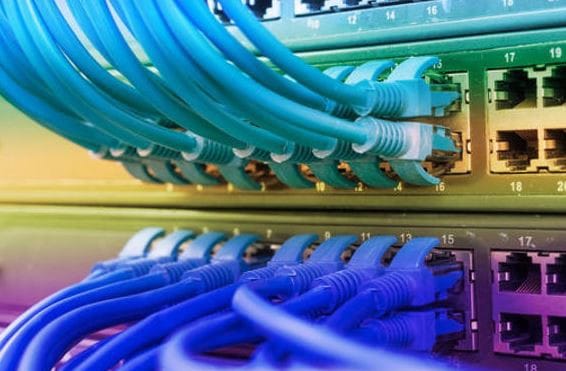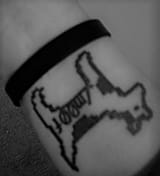Introduction to Networks

Learning about networks can feel like a frustrating and daunting task, so I wrote a condensed version of my notes that covers some ground over what transpires across the wire. If you would like to view the raw compilation I’ve written, please feel free to check out my repo.
This post will discuss layers from the ground up.
Each section is separated by a divider, so feel free to skip around.
The Open Systems Interconnection model (OSI model), was a system devised in the 1970’s in order to help categorize the communicative functions happening at each layer of its design, to give readers a basic understanding of the networking realm. These layers from the bottom up are as follows: Physical, Data Link, Network, Transport, Session, Presentation and Application, but I find that the mnemonic “Please Do Not Teach Students Pointless Acronyms” works just as well when trying to remember this.
Media travels in primarily three forms: Electrical, which uses copper, fiber, which uses light, and wireless, which uses radio transmission. When we think about the physical layer, it’s obvious we’re talking about hardware components, but keep in mind that we’re also talking about the signaling and encoding methods used for travel as well.
Encoding identifies patterns of voltage and current used to represent the bit values of 0 and 1. Ethernet, RFID, and NFC all use Manchester style encoding, whereas bits are represented by transitions from one logical state to another, with no rest or neutral positions (it either is, or is not). Error rates are minimized by this method through signal synchronization, and all this means is that signals are sent along a clock at an evenly spaced duration, or bit time. The other signal transmission method is asynchronous, which happens without this associated clock, making spacing arbitrary, and requiring START and STOP flag indicators for frames.
Modulation (the process where the characteristics of one wave/signal modifies another), has different techniques used in data transmission, the most common being frequency, amplitude and pulse-coded. With frequency and amplitude modulation techniques, the carrier frequency varies in accordance with signal, and with pulse-coded modulation, we see that analog (voice) signals are converted to digital ones through sampling and expressing different amplitudes in binary numbers. The big takeaway from all of this however, is that the representation of bits depends on the signaling method used.
Bandwidth & Cabling
I’ve noticed some people have awkward interpretations on what bandwidth is, but the base definition is the capacity of a medium to carry data from one place to another. When we measure the transfer of bits across media, we’re referring to throughput, and the longer a signal has to travel, the more it attenuates (deteriorates) by design. When we see interference, it’s commonly due to electromagnetic, or radio frequency related issues, which distort signals, but we try to use proper shielding, termination and handling in order to reduce that sort of thing.
I won’t go too much into the depths of cabling covered in the CCNA, because I feel it can be easily looked up, but the main points to consider with copper media is that you have unshielded and shielded twisted pairs, along with coaxial cables and each have requirements stipulated by physical standards. You should know the color coding for CAT5 pin-outs (orange-white, orange, blue-white, blue, green-white, green, brown-white, brown) and that RJ-45’s have four pairs of color-coded wires twisted together in a plastic sheath, which helps reduce signal interference. If you have crosstalk, you have opposing twisted wire pairs that cancel each other out.
There are specific wiring conventions for cable types which include: Straight-through, crossover and rollover. Straight-through simply means both ends of the cable have 568A or 568B termination, while crossover cables only have one of these on one end. Rollover cables are Cisco-proprietary and designed for console ports on routers and switches and coaxial cables are insulated with a copper braid, surrounded by plastic and have F/N and BNC connector types.
Recall earlier, that I mentioned fiber deals with light and try to envision the fiber-optic color-changing novelty lights people like to purchase in order to get an idea of what these strands look like in terms of size and fragility. Because of this, cable design is slightly different, with the core of these cables being pure glass that carries light. A cladding surrounds the core acting as a mirror that light pulses down (this is known as total internal reflection). There’s typically two types of fiber media that we see: Lasers and Light Emitting Diodes (LED), which uses photodiodes (electronic semiconductors) to detect light pulses mentioned above and convert them to voltages, which are later reconstructed into frames.
Fiber is broadly categorized into two types: Single-mode and multi-mode, which offer different perks. Single-mode fiber has light running down the center of a small core, while multi-mode uses the reflection of light that bounces inside the fiber to create multiple paths and uses a larger core with LED emitters. The key difference between the two however is dispersion, or the spreading out of a pulse over time (more dispersion means greater signal loss and less distance).
You should understand that there are three main connector types which include straight-tip, subscriber and lucent, even though other types exist. The most common termination and splicing issues deal with misalignment, end gaps and finishes. End gaps happen when media doesn’t completely touch at a connection, and end finishes imply there could be some dirt or lack of polishing at a termination somewhere. You can test for issues with flashlights and Optical Time Domain Reflectometers.
Lastly, we have wireless media that carries binary digits represented in electromagnetic signals using radio and microwave frequencies. The IEEE has all this information listed, but the most important types to remember here are 802.11 WLAN, which uses CSMA/CA (Carrier Sense Multiple Access/Collision Avoidance), 802.15 WPAN (Wireless Personal Area Network) for Bluetooth, and 802.16 WiMAX (Worldwide Interoperability for Microwave Access), which uses a point-to-multipoint topology.
The Data Link Layer
The purpose of data link is to provide structure to the many 1’s and 0’s that travel across media. There is a lot of material covered in this area, so I’m going to condense it to key points I feel are absolutely necessary to know.
Data link performs two very important functions and is sub-categorized into two areas. The Logical Link Control, which accepts network layer packets and packages units into frames and Media Access Control which handles error detection. LLC is portioned at the upper sub-layer of data link and defines processes that provide services to network layer protocols by placing information into a frame that identifies the protocol being used. MAC is portioned at the lower sub-layer of data link and defines media processes performed by hardware.
At each hop, a router accepts frames, de-encapsulates them and then re-encapsulates those packets into newer frames, which are forwarded to a network segment. Think of encapsulation as placing a letter within an envelope. Your letter contains important information and in order to get to where it needs to be, it has a stamped address. These frames are similar in the sense that they have a header which controls information and addressing, a data portion that holds the IP and a trailer for error detection.
The error detection mentioned above is important because it literally helps with issues seen in both wireless and copper. CSMA (Carrier Sense Multiple Access) helps detect if media is carrying a signal and gives a “busy response” if it sees something is trying to transmit, before trying again later. If we have what’s called a collision, everything drops and needs to be resent. CSMA has two primary methods of handling and resolving issues with transmissions: CSMA/CD (Collision Detection) and CSMA/CA (Collision Avoidance).
Collision Detection, used by Ethernet, has end devices checking for signals and in transmits them in their absence. If it finds a signal, or both ends are “busy” everything stops. Collision Avoidance, used by wireless checks for signals and in their absence, sends a request notification with intent to use. Once it gets an “OK”, it sends data out.
Transport
The next portions of CCNA 1 material cover IPv4 vs. IPv6 and router basics, but again I feel these are subjects you can find in-depth material on elsewhere (all of it is in my repo if you want the detailed stuff), so I’m jumping up to transport really quickly because there is a a base I’d like to cover. I expect that if you’re reading this, you also will look at the many resources into how the three-way handshake works, as everyone in IT should know it hands-down.
Transmission Control Protocol (TCP) and User Datagram Protocol (UDP) function at the transport layer and are basically how applications communicate simultaneously with each other, but the key takeaway is that you are looking at a connection oriented (TCP) protocol versus a connectionless one (UDP). Each have their given strengths and weaknesses, whereas TCP provides more reliability because it handles checks, UDP wins when it comes to streaming because of faster speeds.
With this I am going to go ahead and wrap up my CCNA 1 summary, because I feel I hit on a few topics that might confuse new readers and students looking to take the certification.
I hope this was helpful!





